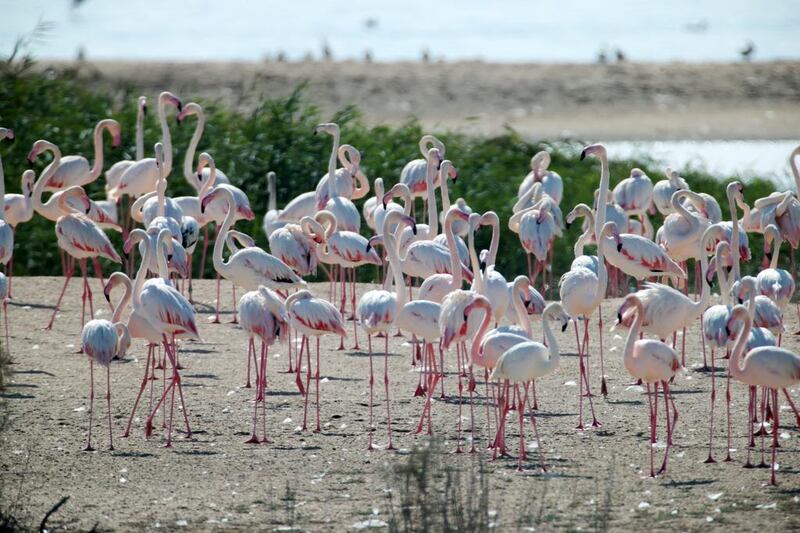ABU DHABI // Al Wathba Wetland Reserve, a 45-minute drive from Abu Dhabi Island, provides a good overview of more than half the species of birds found in the UAE.
Among the 254 species who have made Al Wathba their home, or otherwise a stop on their migratory journey, are the greater flamingos. They can be found laying eggs in the shallow waters of the eco preserve at this time of year.
“We realise it is important for the general public to understand and experience our protected-area sites and we initiated the set-up of Al Wathba for the public,” said Dr Majid Al Qassimi, director of the terrestrial biodiversity division.
The veterinarian said he wanted to dispel the illusion that the Environment Agency Abu Dhabi (EAD) was a “high government” institution by making its work available through public park access.
“Much like the national parks of the US, we want to create a platform for Abu Dhabi to showcase some of the unique environments that we are trying really hard to protect,” he said.
“Any opportunity to get people closer to nature and outside the city, for me, that’s what Al Wathba provides.”
Until February, there will be more than 4,000 flamingos in Abu Dhabi. Almost half of the population will then leave on a migration path taking them anywhere from South Africa all the way up to the Caspian Sea in Kazakhstan.
The conditions at Al Wathba have been made conducive to the habits of the often-pernickety birds who lay their eggs at the park. The man-made eco preserve was created largely from an accidental release of water from the Mafraq treatment plant, which started attracting the birds two decades ago.
“It’s sort of serendipity,” Dr Al Qassimi said. “We had an accidental spill of water that created some very unique conditions, especially for the artemia that the flamingos feed on.”
Artemia salina, or brine shrimp, are the main food source for the greater flamingo. The park team times the hatching of the crustaceans with the arrival of the flamingo to enhance habitat conditions.
“We regulate the water in a way that it coincides to the natural drying and enhancement of lake-water quality,” said Dr Salim Javed, manager of terrestrial assessment and conservation. “In the summer, naturally, the lake dries up so we don’t put in any water.”
By controlling three water outlets from the treatment plant, the team is able to regulate the output to create a welcoming habitat for birds and other animals.
“In a nutshell, it is a very important place for flamingos, other birds and animals, including some of the globally threatened species,” Dr Javed said. Other species found at Al Wathba include the greater spotted eagle, red fox, Egyptian spiny-tailed lizard – called a dhub locally – and the newly discovered metallic-coloured cuckoo wasp. Researchers named it a species new to the wetland reserve in May.
Visitors should pre-register for visits through the EAD website.
The agency is trying to control the number of visitors to minimise disturbance to the animals in the park.
nalwasmi@thenational.ae





